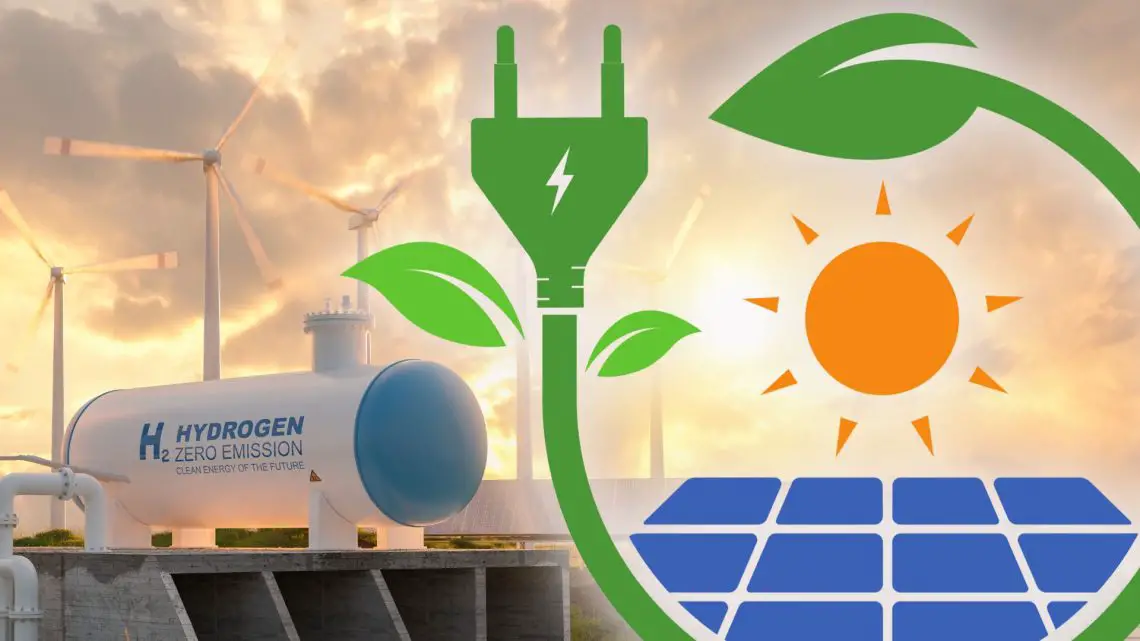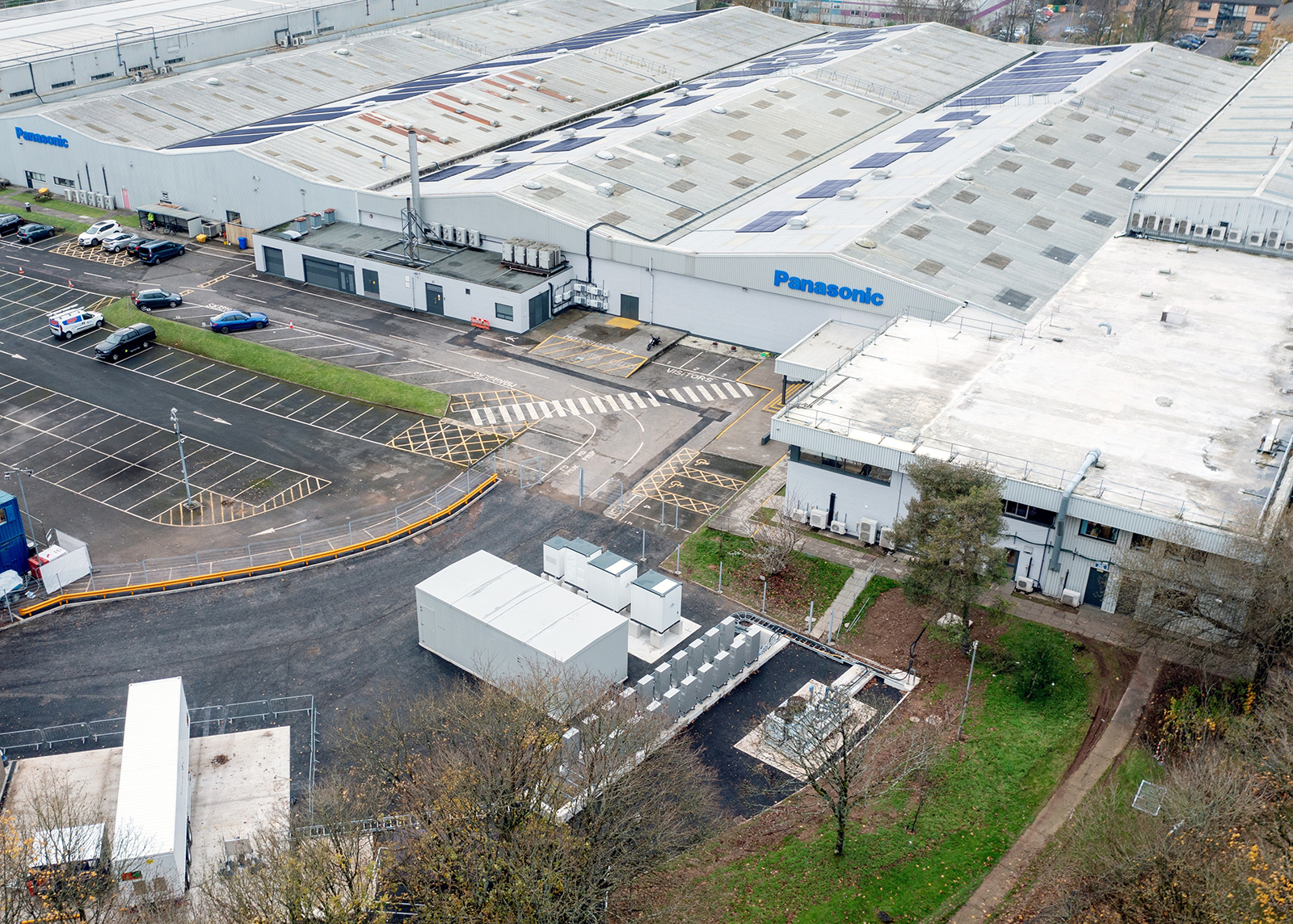
Solar, Hydrogen and Batteries Join Forces at Panasonic’s UK Facility
December 9, 2024From Sunlight to Hydrogen Power—A Sneak Peek at Panasonic’s 100% Renewable Energy Factory
Panasonic Corporation has completed the installation of a groundbreaking demonstration power generation system at Panasonic Manufacturing UK Ltd. (PMUK) in Cardiff, Wales. This innovative initiative retrofits the 50-year-old manufacturing plant with cutting-edge green technologies, enabling the facility, which manufactures microwave ovens and other products, to operate entirely on renewable energy. By integrating pure hydrogen fuel cell generators, photovoltaic generators, and storage batteries, Panasonic is establishing a new standard for environmentally friendly manufacturing.
Smart Energy Management for Efficiency
A crucial element of the transition to 100% renewable energy is the factory’s advanced Energy Management System (EMS), designed specifically to increase operational efficiency and ensure stability. The EMS monitors fluctuations in electricity demand within the factory while accounting for changes in the UK’s unpredictable weather conditions.
The system will officially begin operations by March 2025, enabling an efficient balance of energy generation and consumption. By integrating data from local weather forecasts, along with tracking internal power needs, the EMS will optimize resource use and reduce energy loss.

Image Credit: Panasonic
Inside the Renewable Energy System
At PMUK, the new energy system offers a complete and optimized solution to generate and use renewable energy effectively within the factory. Key highlights include:
-
Advanced Hydrogen Power Generation
The facility uses 21 units of 5 kW pure hydrogen fuel cell generators, delivering stable energy supply while balancing operating hours to ensure smooth maintenance. The hydrogen used is locally sourced green hydrogen, further reducing the system’s carbon footprint. -
Solar Power Integration
The facility’s photovoltaic system contributes 372 kW of solar energy, a component of the total 760 kW installed on the factory roof last year. This energy is seamlessly integrated with the hydrogen fuel cells and storage batteries. -
Massive Energy Storage
A 1 MWh battery storage system allows the factory to store excess energy for future use, improving energy efficiency, reliability, and autonomy. -
Energy Management System (EMS)
An EMS under development will monitor electricity demand and adapt to weather changes, ensuring optimal energy use. Operational by March 2025, the EMS aims to minimize energy loss while maintaining consistent supply for factory needs. -
Cogeneration for Efficiency
The hydrogen fuel cells achieve up to 95% energy efficiency by utilizing the heat generated during the power production process. This heat supports in-house needs such as heating, hot water supply, and preheating for advanced air conditioning systems, reducing overall power consumption.
Other Hydrogen Technology Advancements by Panasonic
Panasonic has been actively exploring the potential of hydrogen as a sustainable energy source. Some of its notable advancements in this field include:
- Residential Hydrogen Fuel Cells: Panasonic’s ENE-FARM, a household fuel cell, has been commercially available since 2009 in Japan and is now expanding to Europe. It uses hydrogen extracted from natural gas to generate electricity and hot water for homes, with over 200,000 units in use globally.
- Hydrogen Refueling Stations: Panasonic has developed hydrogen stations like the “H2 Kusatsu Farm” in Japan, which supports hydrogen mobility by providing refueling infrastructure for hydrogen-powered vehicles.
- International Hydrogen Supply Systems: Panasonic is collaborating internationally to integrate hydrogen supply systems, aiming to promote carbon-neutral logistics. This includes projects in Europe, Australia, and China, where they are launching new hydrogen fuel cell generators.
- Low-Cost Green Hydrogen Production: The company is researching methods to produce green hydrogen cost-effectively, using surplus renewable energy like offshore wind. This hydrogen is stored and used for various applications, contributing to a sustainable energy future.
- Hydrogen-Powered Community Energy Systems: Panasonic is testing community energy systems powered by hydrogen to enhance local energy independence. These systems integrate hydrogen fuel cells with solar and battery storage to provide stable, renewable energy.
These initiatives highlight Panasonic’s commitment to advancing hydrogen technology as a key component of a sustainable energy future.
These projects showcase Panasonic’s comprehensive strategy to establish hydrogen as a viable, long-term energy solution for various applications.
Why This Initiative Matters
Hydrogen-powered factories represent a significant breakthrough in energy technology. By shifting from traditional fossil fuels to renewable sources like hydrogen and solar, industries can reduce greenhouse gas emissions, paving the way for a cleaner future. This system’s ability to operate entirely on renewables also enhances energy security, as the factory isn’t tied to external or inconsistent power grids.
Another compelling aspect is scalability. The integrated energy management and cogeneration technologies demonstrated at PMUK could be replicated across factories worldwide. This could make industries more self-sufficient while meeting ambitious climate change goals.
Additionally, locally sourced green hydrogen ensures economic benefits by driving collaborations with regional energy providers. This advancement not only helps Panasonic achieve sustainability but also strengthens local, renewable energy-driven economies.
How Many Microwaves Does PMUK Produce Annually?
PMUK, a key manufacturing hub for Panasonic, produces approximately 600,000 microwave ovens every year. This number reflects consumer demand for reliable kitchen appliances and highlights the scale of energy that the new system must support using sustainable methods.
Applying This Technology Beyond Factories
The technologies used in PMUK’s renewable system offer exciting possibilities for broader applications. At its core, combining hydrogen, solar power, and battery storage paves the way for decentralizing energy systems, making clean and stable energy available to local communities, homes, and smaller industries.
-
Immediate Applications: Small-scale manufacturing plants and businesses could adopt similar systems to reduce their energy costs and reliance on non-renewable sources. Cogeneration techniques could also be used in commercial buildings for heating, cooling, and hot water needs while saving energy.
-
Urban Infrastructure: Municipalities could integrate hydrogen-powered energy systems into urban facilities such as hospitals, schools, and public transport depots. With green hydrogen producing zero emissions, this could help cities cut down on their carbon footprints.
-
Emerging Possibilities: Developments in EMS technology could make renewable energy systems smarter and more responsive to real-time energy demands in households or businesses. Improved efficiency in these systems opens the possibility of renewable microgrids, enabling an entirely decentralized electricity network.
Looking Forward
While the demonstration at PMUK is expected to fully mature by 2025, its implications reach far into the future. As global hydrogen production scales up and costs decrease, the use of this renewable energy source could expand dramatically. By exploring integrated systems like the one Panasonic is developing, the transition to a hydrogen-driven economy becomes more attainable, addressing global energy demands with environmentally responsible solutions.
The success of initiatives like this indicates a powerful potential for industries to shift towards carbon-neutral technologies—not decades from now, but in the coming years. It shows that collective action from innovators and local governments can bring sustainable energy solutions closer to reality. This isn’t just about reaching net-zero emissions but reshaping how energy is produced, used, and shared in a way that benefits us all.



 With over 15 years of reporting hydrogen news, we are your premier source for the latest updates and insights in hydrogen and renewable energy.
With over 15 years of reporting hydrogen news, we are your premier source for the latest updates and insights in hydrogen and renewable energy.